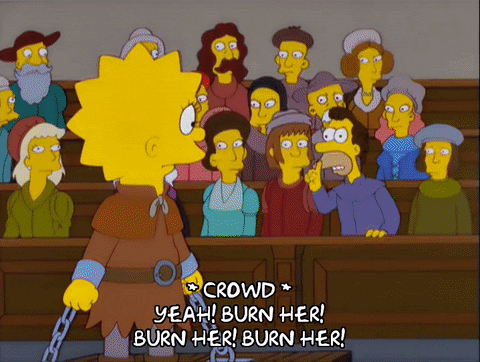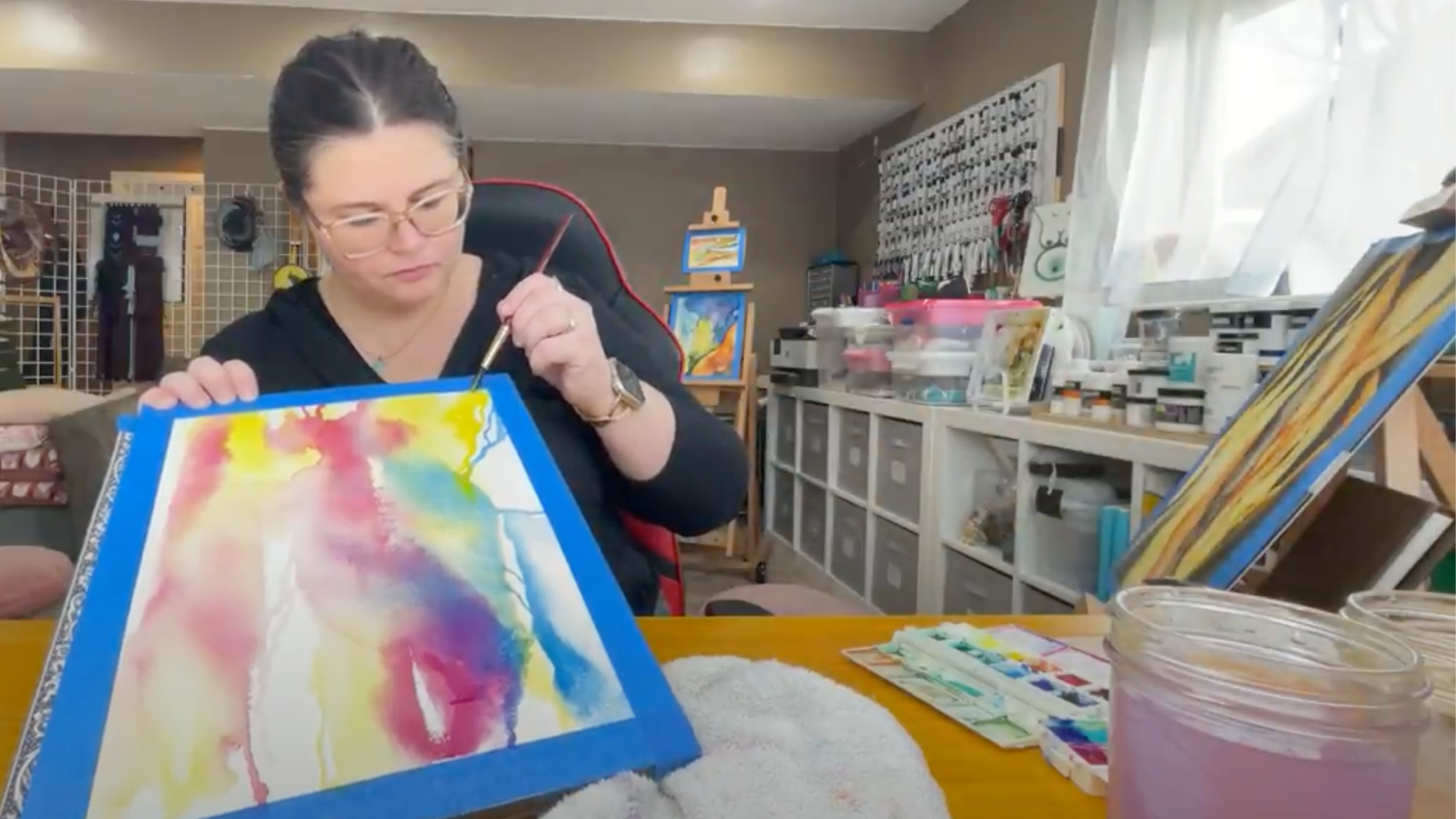Living Left: Creativity, Neurodivergence, and the Beauty of a Crooked Line
I recently learned that International Lefthanders Day is August 13 (this shouldn’t surprise me, since there is a day to celebrate everything you can think of and all the things you can’t).
Being a lefty myself, this sent me down a rabbit hole of memories, research, and excavating my Google Drive.
Enjoy!
Looking Back on My Lefty Life
As a kid, I pitched on my softball team - not because I had a great arm (I didn’t), but because my coach knew I was left-handed and wanted to throw off the batters on the other team. It was embarrassing how many kids walked that season.
The middle finger on my left-hand has grown slightly crooked from a callus formed by years of tightly gripping pencils while pushing, rather than dragging, them across the page.
When I was young and cared about such things, I used to lay in bed at night bending it to the right trying to straighten it until it hurt. Eventually, I grew to love it.
When I was first introduced to the pottery wheel in my high school art class, I was devastated to find out I was terrible at it. I watched my classmates’ clay effortlessly transform from blocks to cones to vases while mine became a projectile, flinging itself off the wheel with a thud every time.
I was on the brink of tears with frustration before my teacher realized I was left-handed and flipped the switch to change the wheel’s direction. And just like that, it felt like the clay and I had finally agreed on something.
In my first year of college, all of my morning classes were held in 100+ seat lecture halls. After a week of hunching over a right-handed fold-out desk to take notes - neck craned, back twisted, one butt-cheek hovering above the seat - I started arriving 30 minutes early to claim one of the four left-hand desks.
Even now, I’m occasionally gifted beautiful supplies that are too painful to use because they were built for right-handed use.
If Ned Flanders’ Leftorium were real, my wishlist would be as long as my left arm.
Are Lefties Sinister?
According to the Romans, the answer is a resounding yes. The Latin word for ‘left’, sinistra, evolved into the English ‘sinister.’ Conversely, the Latin word for ‘right,’ dexter, has evolved into positive words, like ‘dexterous.’
But it wasn’t only the Romans. While archaeological evidence shows that lefties were among our Paleolithic ancestors, many ancient and classical civilizations associated left with bad omens, weakness, and impurity; the right, on the other hand (pun very much intended) was linked to virtue, honor, and power.
The rise of early Christianity didn’t help our case. The Bible consistently references the right hand as the hand of blessing and favor. The left hand is mentioned rarely - and usually in connection with judgment or separation.
Did you know Lisa Simpson is left-handed? I looked it up. She is.
By the Middle Ages, this bias had hardened into superstition. Left-handedness became synonymous with witchcraft, heresy, and sin. Women, in particular, were subject to suspicion of deception and danger if they favored their left hand.
During the early modern period and well into the 20th century, left-handedness was seen as a sign of mental, moral, or intellectual defect. Children were punished, retrained, and discouraged from using their dominant hand. Some artists disguised their handedness out of fear of social or professional backlash. For some highly studied artists, such as Vincent Van Gogh, there is still debate surrounding which hand he favored.
Though left-handedness is more acceptable today, the world is still largely built for right-handers. From scissors and can openers to desk design and computer mouses, the bias remains.
Researchers now explore links between left-handedness, creativity, and cognitive flexibility, noting that left-handers often excel in visual-spatial reasoning, divergent thinking, and adaptability. These findings are helping to shape the narrative - rather than being seen as defective or sinister, the left hand is being reframed as a symbol of intuition, artistic power, and creative disruption.
And for those of us who are living it - hunched, smudged, and slightly crooked - it’s a welcome rewrite.
Are Lefties More Creative?
While it’s tempting to claim left-handed creative superiority, the research is on this topic is complicated.
Some studies suggest a connection - especially among ambidextrous folks who naturally switch hands for different tasks (like my brother). One study found that ambidextrous women scored highest on creativity assessments. Another recent study showed that lefties tend to excel in visual-spatial creativity, like design and abstract thinking.
Historians have also found that left-handed artists may be overrepresented in the visual arts, with cultural theorists speculating that creative power often comes from the margins of society.
But being left-dominant alone doesn’t make someone creative. Researchers point out that the cognitive flexibility and neurodiverse ways of processing foster creative problem-solving and out-of-the-box thinking.
Recent studies also show that lefties are more likely to be autistic, ADHD, or dyslexic - all of which are indicators of different neurological organization. Left-handers often have less lateralized brains, meaning their cognitive functions are more evenly distributed across hemispheres. This may enhance pattern recognition, sensory sensitivity, and nonlinear thinking - all of which also fuel creative processes.
Being a neurodivergent lefty myself, I’ve come to recognize my creativity as something that arises from the atypical ways I experience the world around me - sometimes this looks like noticing the quiet discoveries waiting to be explored on a hike, other times it looks like anxiety over unfamiliar foods and making small talk at an event. It’s a package deal.
Practical Tips for Creative Lefties
If you can relate to my experience with the pottery wheel, here are a few ways to make your artistic endeavors more left-friendly:
Contort your workspace, not your body
Whenever possible, arrange your workspace to accomodate the most natural way you work. This might look like:
Rotating your paper or canvas to make creating more comfortable.
Arranging your workspace with your most used tools to your left to avoid accidentally dragging your sleeve through paint or knocking over your cup of water.
Using a pottery wheel that spins clockwise if you’re working with clay. Not all pottery wheels have this feature, but most student models do.
Checking the settings of your digital tools to see if they have a left-handed interface. In Procreate, this moves the sidebar to the right side of the screen so you aren’t accidentally tapping buttons while you’re working.
Use the best tool for the job
Unfortunately, most tools are designed with right-handed users in mind - which can range from mildly annoying to genuinely limiting depending on the task. At best, this can mean a bit of inconvenience or discomfort, at worst, this looks like ruined works due to a lack of precision or even harming yourself because you can’t hold the tool properly. But there are options for lefties and tools out there to make things a bit easier:
Scissors are one of the most common tools available in a left-handed variety, but shears, rotary cutters, and more are out there if you’re willing to search for them. Trust me - your thumbs and wrists will thank you.
If you’re working in graphite or charcoal and placing a sheet of clean paper under your drawing hand to avoid smudging details. If you’re painting, or you’d prefer not to rest your left hand off the surface of your work all together, try using a mahl stick to provide a stable resting spot for your hand instead.
Learn from other lefties when possible
When learning most mediums, the handedness of the instructor doesn’t matter much. However, I’ve noticed that it makes a huge difference when it comes to fiber arts.
I learned to crochet in my 20s from a right-handed friend, but whether I was sitting next to or across from her, it was more difficult to pick up than I had expected - even though she was a wonderfully patient teacher. Ultimately, we ended up placing a mirror in front of her, which helped, but not nearly as much as learning from left-handed fiber artists. Here are a few that I’ve found helpful:
Learn How to Crochet Left-handed: A Beginner’s Course from Moogly
A Left-handed Beginners Guide to Needlepoint from Greystone Needlepoint
There are also left-handed potters like Nele Ostyn making it easier for the rest of us with articles like Throwing for left-handers: Tips for Beginners and several others on YouTube.
So, Happy International Lefthanders Day to my fellow lefties. Celebrate the day you didn’t know you needed by creating something special, shopping for the perfect pair of left-handed scissors, and telling me in the comments - what’s your most memorable lefty moment?
And, because poetry was my first creative home, I’ll leave you with a piece written back in 2011 in the style of Lucille Clifton. I have always admired the strength, sass, and unapologetic self-expression of her work - this was my attempt at channeling the same energy and making it my own.
I chose my hands as the subject because they’re the truest record of my life - crooked, calloused, and full of stories. It felt fitting for this poem to resurface on a day that honors the literal and metaphorical ways we move through the world as left-handed creatives.
Homage to my Hands
(for Lucille Clifton’s Homage to my Hips)
These hands are inventor’s hands,
worn to a calloused middle finger where they hold the pen,
scissors, and sewing needle.
These hands are tender hands.
They have rocked babies to sleep,
crafted peanut butter sandwiches, and pinned up quilted forts.
These hands are seductive hands,
teasing with backrubs and tangling themselves in a men’s hair.
These hands are working hands.
They have laid concrete, sod, and roofing tiles.
These hands are thieving hands,
pocketing earrings without paying the price.
These hands have flipped the bird,
flipped the channel, and flipped my hair.
These hands are crooked hands,
scarred and chipped in all the right places.
These hands are indented by rings,
scratched by cats, and scented with sandalwood lotion.
These hands have plunged through ice
and come up breathing and bleeding.







